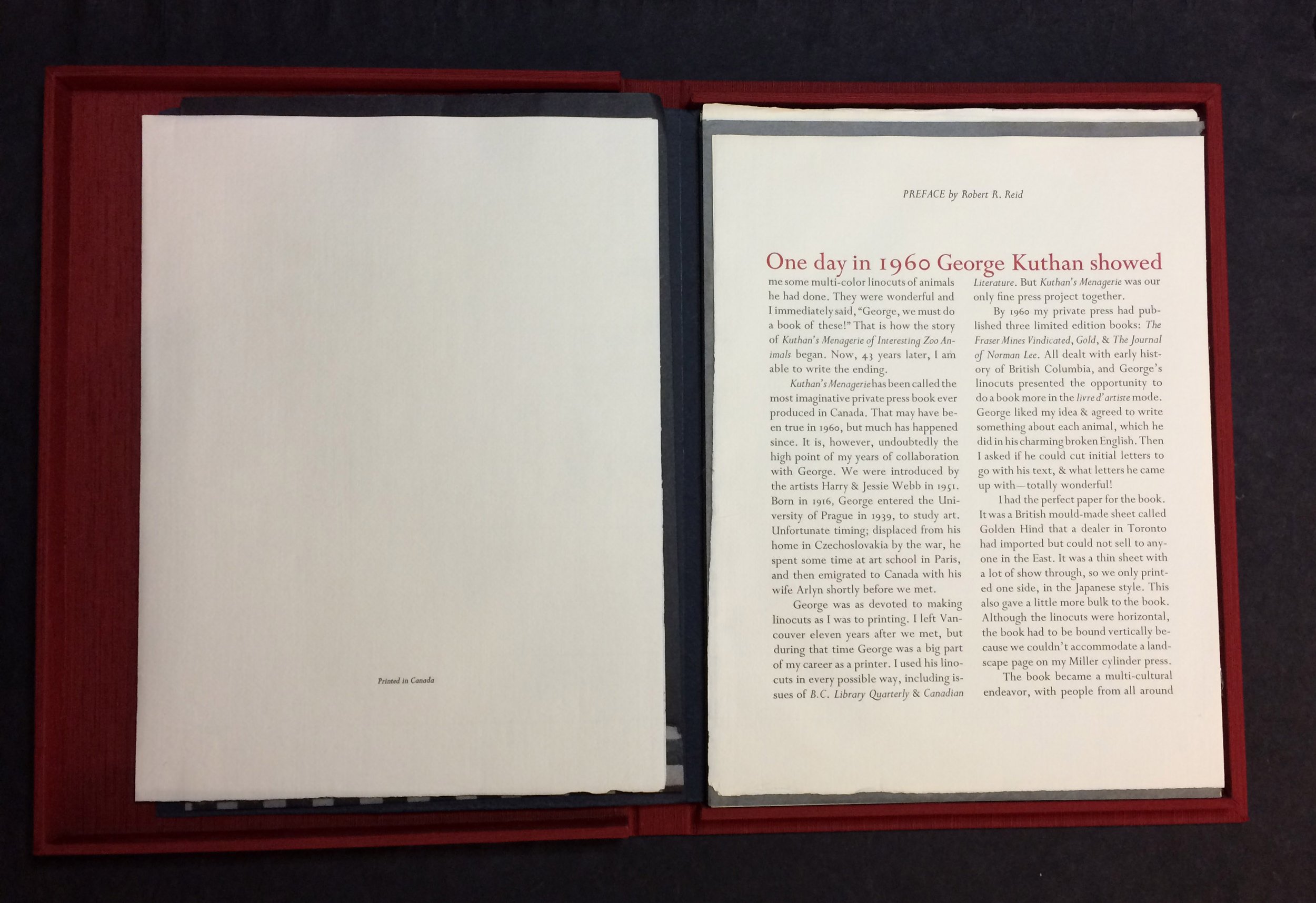Kuthan’s Menagerie Completed
George Kuthan & Robert R. Reid
Kuthan’s Menagerie of Interesting Zoo Animals was published in 1960 from the private press of Robert & Felicity Reid (under the imprint Nevermore Press). It has since become famous in the history of fine printing in Canada, not just for Kuthan’s exquisite multi-color linocuts of animals, but also for the fact that only 60 of the edition’s 130 copies were ever bound; the balance remained in the bindery, eventually forgotten but luckily, not lost.
Kuthan’s Menagerie Completed adds a new title page; a two-page preface by Robert R. Reid, the original publisher; and an additional colophon, all printed at Heavenly Monkey in the same type (Perpetua) and on the same paper (Golden Hind) used in the original book. The original sheets are surrounded by an inner wrap of the yellow Japanese paper used for endsheets in the copies bound in 1960. All of the sheets are held in an outer wrap of handmade St Armand paper. The colophon is numbered (50 copies) and signed by Robert Reid. (Please note these copies do not bear George Kuthan’s signature. The copies issued in 1960 were numbered and signed after being bound.) The clamshell box is covered in red Japanese fabric with decorative printed labels debossed on the front and spine. See further details below. Folio, 16 leaves. 2003


The unbound copies of Kuthan’s Menagerie were purchased from the original binder’s estate by Vancouver booksellers Stephen Lunsford and William Hoffer in the late ’80s; all of the 50 complete copies remaining were issued as part of this project.
The original book was printed on Golden Hind, a laid sheet, one side only and folded. Reid’s preface explains this both helped solve a problem with see-through and bulk up the book (which consists of 13 sheets forming 26 pages, from half title to colophon). The pages were printed landscape, and the sheets bound along the open edge. The original binding was quarter leather with a very soft Japanese paper over boards. This paper proved to be a poor choice as it did not withstand contact with other books or readers’ hands. Rather than attempt to recreate the original binding, the remaining copies were issued unbound, with a new wrap and custom-made clamshell box. This allows for easier examination of the individual sheets.